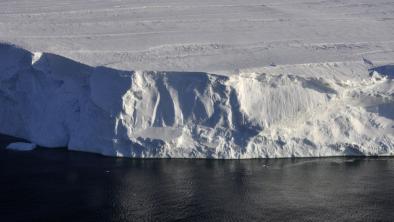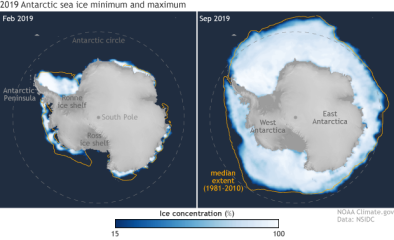Science Source
Mechanisms driving variability in the ocean forcing of Pine Island Glacier
- States that the Pine Island Glacier (PIG) terminates in a rapidly melting ice shelf, and ocean circulation and temperature are implicated in the retreat and growing contribution to sea level rise of PIG and nearby glaciers
- States, however, that the variability of the ocean forcing of PIG has been poorly constrained due to a lack of multi-year observations
- Shows, using a unique record close to the Pine Island Ice Shelf (PIIS), that there is considerable oceanic variability at seasonal and interannual timescales, including a pronounced cold period from October 2011 to May 2013
- Finds that this variability can be largely explained by two processes: cumulative ocean surface heat fluxes and sea ice formation close to PIIS; and interannual reversals in ocean currents and associated heat transport within Pine Island Bay, driven by a combination of local and remote forcing
- Concludes that local atmospheric forcing therefore plays an important role in driving oceanic variability close to PIIS
Related Content
Headline

Jan 29, 2020 | BBC News
Journey to the 'doomsday glacier'
Headline

Nov 22, 2019 | NOAA Climate.gov
Understanding climate: Antarctic sea ice extent
Headline

Mar 26, 2019 | The Guardian
Australian researchers find huge lakes beneath largest east Antarctic glacier
Science Source
| Geophysical Research Letters
Mass Loss of Totten and Moscow University Glaciers, East Antarctica, Using Regionally Optimized GRACE Mascons
Yara Mohajerani, Isabella Velicogna, Eric Rignot


